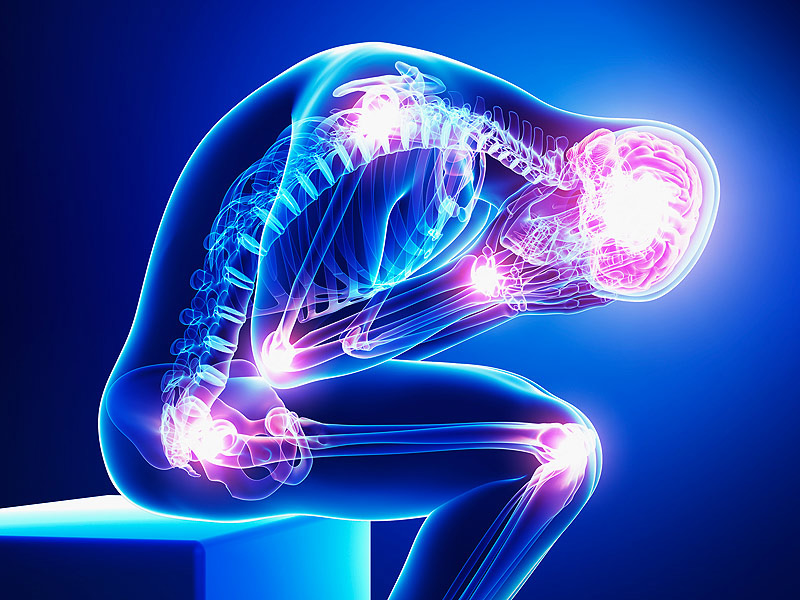Chronic pain affects millions worldwide, deeply impacting daily activities and overall quality of life. While traditional medicine offers various solutions, natural remedies provide a gentler approach, often with fewer side effects. This blog post delves into five effective natural treatments for managing chronic pain.
Massage Therapy: A Gentle Path to Relief
Massage therapy is more than just a way to relax; it’s a therapeutic tool for pain management. Techniques like deep tissue and Swedish massage target muscle tension and promote circulation, helping to ease pain and enhance mobility. Have you ever noticed how a good massage can make you feel not only relaxed but also emotionally uplifted? This is because massage therapy also stimulates the release of endorphins, your body’s natural painkillers. To ensure the best results, seek out a certified massage therapist who understands the complexities of chronic pain conditions.
Furthermore, incorporating regular massage sessions can lead to long-term benefits including sustained pain reduction and improved sleep. Regular massage also helps to combat stress, which can exacerbate pain symptoms, making it a holistic tool for managing chronic conditions. Patients often report a better range of motion after massage therapy sessions, which can be particularly valuable for those with stiff joints or muscle spasms. Don’t forget to communicate with your therapist about your pain points; this collaboration will help customize your experience to maximize relief. For those concerned about the cost, consider that many insurance plans now recognize the therapeutic value of massage and offer coverage options.
Herbal Treatments: Nature’s Pain Relievers
Turning to nature, several herbs have been shown to offer relief from pain. Turmeric, with its active compound curcumin, has anti-inflammatory properties that rival over-the-counter pain relievers. Ginger, another potent herb, decreases inflammation and can alleviate pain related to arthritis and muscle soreness. Willow bark, often referred to as “nature’s aspirin,” contains salicin which the body converts into salicylic acid, providing pain relief and anti-inflammatory effects. Before adding any herbal supplement to your regimen, it’s crucial to consult with your healthcare provider, especially if you are taking other medications. It’s also important to source high-quality herbs and supplements from reputable suppliers to ensure safety and efficacy.
Many people find that integrating these herbs into their daily routines, either through cooking, teas, or capsules, not only helps with pain but also enhances their overall well-being. Studies have shown that turmeric and ginger can also support immune function, which can be compromised in those dealing with chronic pain. For those hesitant to take synthetic drugs, herbal treatments offer a comforting, natural alternative that has been used in traditional medicine for centuries. When starting any new herbal treatment, it’s a good idea to monitor your body’s response closely and discuss any changes with your healthcare provider.
Medical Marijuana: A Growing Option for Chronic Pain
For residents in states where chronic pain is a recognized qualifying condition, medical marijuana presents a promising option. The process to legally acquire medical marijuana begins with applying for a medical marijuana card online, which grants you legal access to purchase and use marijuana for managing your symptoms. Medical marijuana can significantly reduce pain levels, particularly in cases where traditional treatments have failed. Strains high in CBD and low in THC can alleviate discomfort without a strong psychoactive effect. Are you interested in this option? If so, exploring the requirements for an online medical marijuana card in your state is a great starting point.
The process of applying for this card has been streamlined in many states, making it accessible to those who need it. Research into the specific strains that are most effective for various types of pain can provide further guidance. Medical professionals are increasingly acknowledging the benefits of medical marijuana and can provide advice on how to use it responsibly. This option not only helps manage pain but also can improve sleep and reduce anxiety, which are often significant issues for those with chronic pain. As the stigma around medical marijuana decreases, more people are finding it a viable option for pain relief. It’s important to follow state laws and regulations to ensure your use is legal and safe.
Physical Therapy: Building Strength and Flexibility
Physical therapy is a cornerstone of non-invasive chronic pain management. By strengthening muscles and improving flexibility, physical therapy helps support and stabilize painful joints and structures. A physical therapist can tailor exercises to your specific needs, helping not only to reduce pain but also to prevent future injuries. Regular sessions can teach you techniques for managing pain day-to-day, a vital skill for anyone dealing with chronic conditions. Moreover, therapists often incorporate manual therapy techniques that can help relieve pain directly at the source by mobilizing stiff joints and reducing muscle tension.
Advanced methods like ultrasound or electrical stimulation may also be used to enhance the therapy’s effectiveness. These techniques can be particularly helpful for those who have not found relief through more conventional means. Ensuring that you follow through with prescribed home exercises will further the effectiveness of your sessions and help you gain more control over your pain management. Many patients find that this active involvement in their own treatment not only improves physical health but also enhances mental resilience against chronic pain. A supportive physical therapist can make a significant difference in your journey toward reducing chronic pain, providing both skilled intervention and motivational support.
The Soothing Power of Water: Hydrotherapy
Hydrotherapy uses water to treat various conditions, including chronic pain. Whether it’s a warm bath, a heated pool session, or a targeted water jet massage, hydrotherapy can significantly reduce pain and improve joint function. The buoyancy of water lessens stress on the body, allowing for pain-free movement. This method can be particularly beneficial for those with joint issues or severe muscle pain. Consider incorporating simple hydrotherapy techniques at home, like warm baths with Epsom salts, to begin experiencing relief. Additionally, participating in structured aqua therapy programs can provide a social element that boosts mental health while managing physical pain.
Water resistance serves as a gentle but effective means of strengthening muscles, which is crucial in supporting painful joints. Even light swimming can help ease chronic pain, as the water’s buoyancy greatly reduces the impact on painful areas, making it easier to perform exercises. Local community centers often offer aqua therapy classes designed to help those with chronic pain, providing guided, low-impact workouts. These sessions not only improve physical health but also foster a sense of community and emotional support among participants.
Conclusion: Embracing Natural Remedies
Chronic pain doesn’t have to dominate your life. Integrating natural remedies into your pain management strategy can offer relief and improve your quality of life. Remember, it’s essential to consult with healthcare professionals before starting new treatments. Whether you choose massage therapy, hydrotherapy, herbal treatments, physical therapy, or medical marijuana, each option has the potential to help you manage your pain and regain control of your life. Consider these natural approaches as complementary to your existing treatments, and feel empowered knowing you have multiple tools at your disposal to tackle chronic pain. Embrace these therapies with an open mind and consider how they can be tailored to fit your individual needs and lifestyle.



